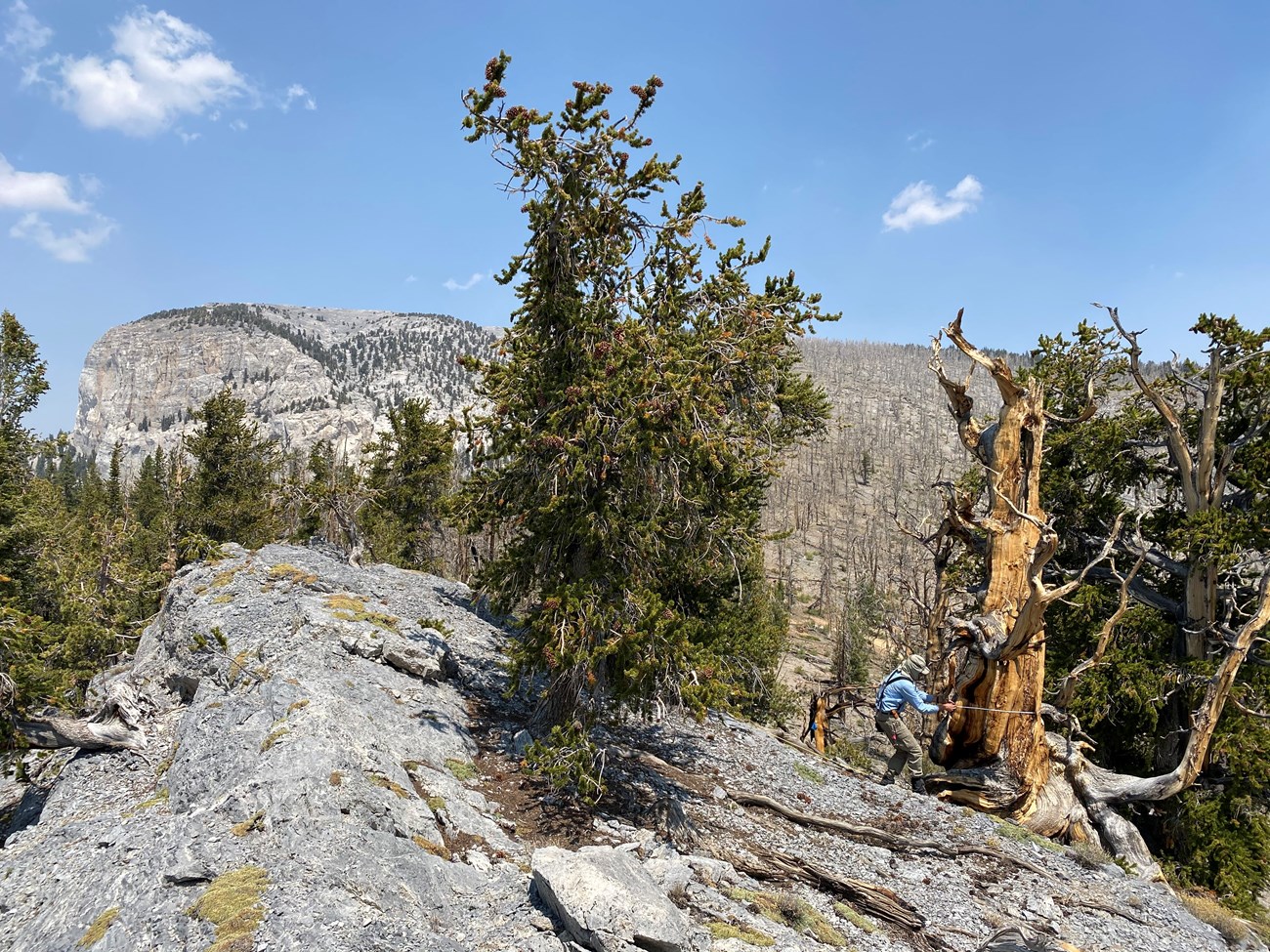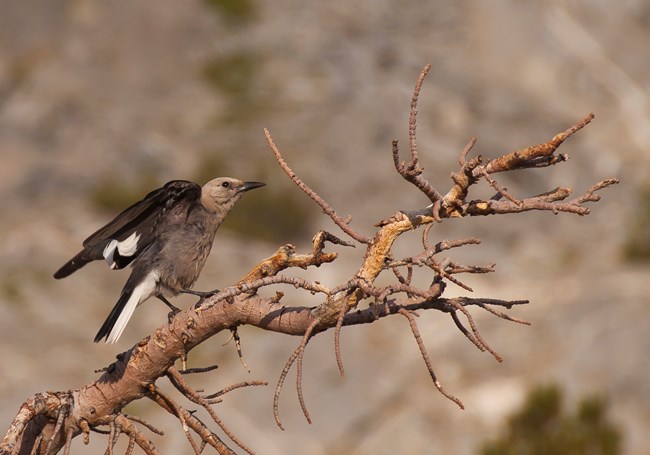Last updated: September 28, 2023
Article
White Pines Healthy in Great Basin National Park

Photo courtesy of Kyle Smith, Great Basin Institute
Two white pine species occur in Great Basin National Park, limber pine and Great Basin bristlecone pine. Limber pine occupies the broadest elevational distribution, from lower elevation sites to treeline, of all North American white pines and occurs in a wide range of environments. Great Basin bristlecone pine grows at high elevations and is very long-lived. With individuals known to be more than 5,000 years old, it is among the oldest living species on earth! It has been identified by Park staff as a species of management concern. Both species face similar threats: mountain pine beetles, a warming climate, and a non-native pathogen that causes white pine blister rust.
The Mojave Desert Network began monitoring these two white pine species in Great Basin National Park in 2018. In August 2020, the Network completed installation of its final set of white pine monitoring plots. During a collaborative field sampling effort with Upper Columbia Basin Network staff (who monitor limber pine in Idaho), scientists found surveyed pines to be healthy, with no evidence of white pine blister rust infection.

Photo courtesy of Isaac Chellman
White Pine Importance
These long-lived, high-elevation pines are considered foundation species. They grow in places too harsh for other tree species and create locally stable environments on which other species depend. They regulate important ecosystem processes such as snowmelt and streamflow. They enable shade-tolerant species to establish and provide habitat and food for birds and mammals – their seeds are eaten and spread by Clark's nutcrackers, jays, and chipmunks. If foundation species are lost, a cascade of impacts can occur, including shifts in biological diversity and in the function and stability of the community.
Threats
White pines are important species in many subalpine ecosystems and are currently experiencing population declines, particularly in the Rocky Mountains and the Cascades, due to the perils noted above. Of these, the non-native fungal pathogen (Cronartium ribicola) which causes white pine blister rust in five-needle white pines, is a major threat. Blister rust damages and kills these pines by girdling branches and trunks, which restricts nutrient flow; it also causes cankers in the trees’ bark, making trees more susceptible to bark beetle attacks. While mountain pine beetle is a native species and has historically had periodic outbreaks, the recent epidemics in high-elevation western forests are considered unprecedented in duration and magnitude. Warming temperatures play a role, facilitating mountain pine beetle activity at higher elevations and for longer time periods seasonally at lower elevations.
Monitoring
Monitoring these iconic and foundational tree species will enable early detection of disease, damage, or decline related to the numerous threats white pines face. This project focuses on detecting and interpreting changes in forests containing limber and Great Basin bristlecone pine. The primary monitoring questions are:
- Are white pine forests changing in structure and species composition?
- Are rates of tree mortality increasing, are rates of recruitment from seedlings to trees decreasing, and is seedling regeneration decreasing?
- Are the key disturbance species—the invasive Cronartium ribicola and native mountain pine beetle and dwarf mistletoe—increasing in incidence and severity?
Management
White pine monitoring will provide park managers with information that has multiple applications:
- Early detection of disease, damage, or decline in these trees provides managers with the information needed to inform appropriate responses.
- Sharing information about the importance and condition of these long-lived, sensitive tree species with the public will enhance visitor experiences and contribute to protecting the ecosystems where they are found.
- Collaborative monitoring with multiple networks and parks enables scientists and managers to combine white pine data from Great Basin National Park with data from other parks in the western US. This allows park managers to problem-solve together and collaborate on solutions.
